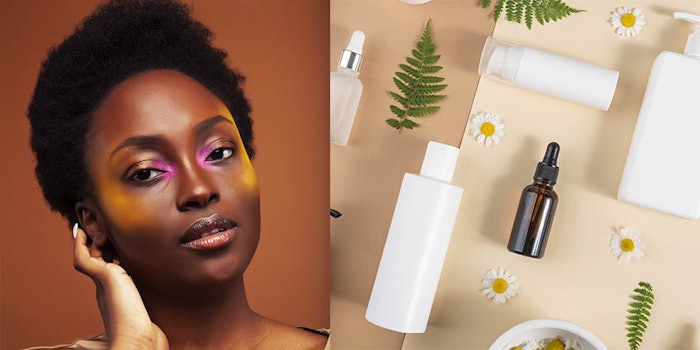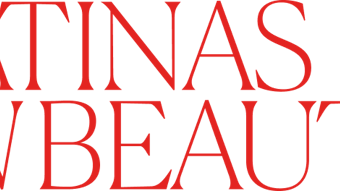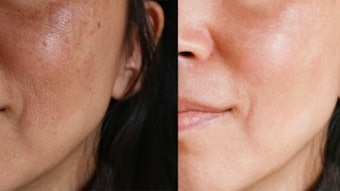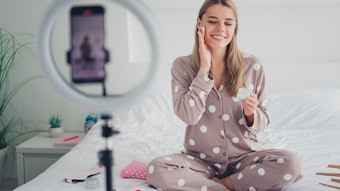
This report comprises first-half 2020 data and offers an update of Global Cosmetic Industry’s Beauty 2020-2030 report, which was crafted at the very start of the COVID-19 pandemic. Special thanks to CEW, which is hosting an ongoing series of virtual events for the beauty industry. -Editor
This year has been like no other in beauty.
The economic and societal impacts of COVID-19 are expected to be massive by year’s end, with beauty experiencing rapid shifts in buying patterns, channel activity and consumer needs.
In this report, we break down the latest sales results and forecasts from leading market data experts, outline trends in each beauty product category and offer insights into shifting retail and consumer realities.
The State of Beauty H1 2020
In January-February 2020, the U.S. prestige beauty market was up $78 million year-over-year, per NPD data. By March-April that gain had been erased, producing a year-over-year sector decline of $1.4 billion. That shocking drop has since dialed back slightly to a drop of $850.8 million for the May-June period.
In the second quarter of 2020, NPD reported that U.S. prestige beauty sales totaled $2.8 billion, a -36% decline compared to the same period of 2019. However, online sales spiked 90% in the quarter, representing about 61% of industry sales volume. As of Q2, the online channel comprised 70% of the market share.
During a recent CEW beauty industry briefing, Larissa Jensen, VP, beauty industry advisor, The NPD Group, noted that U.S. prestige beauty has seen its year-over-year dollar performance drop a whopping 25% in the first half of 2020.
U.S. overall value dropped the least, at 25%.
Skin care and hair care fared the best through February and May, while fragrance had its strongest period in June, according to NPD data.
Direct-to-consumer brands outside the top 20 captured share across all categories, said Jensen. Nicole Collida, SVP, brand effectiveness sales, Nielsen, pointed out that Beautycounter grew in share during the lockdown.
Meanwhile, online mass beauty sales rose 13.5% January-June 2020, according to a CEW presentation from Collida.
In the four weeks preceding her July 21 talk, mass health and beauty sales experienced $15 million in sales growth, primarily driven by beauty, signaling somewhat of a comeback.
NPD’s Jensen pointed out that the high end and the low end sectors of the beauty market are doing relatively well but the middle price point is being squeezed.
While it’s difficult to predict the course of the pandemic given the patchwork of infection containment approaches nationwide, by year-end the final U.S. prestige beauty decline could range between 5% and 18%, with NPD’s preferred forecast coming in at a drop of 11%.
55% of surveyed beauty shoppers say they intend to purchase beauty products in the next month.
According to data released by Mckinsey & Company in May 2020, the global beauty industry is expected to witness a 30% drop in revenue 2020, and up to 35% in the United States (all product tiers combined).
NPD has reported that the COVID-19 shopper is prioritizing skin care and haircare, which suffered smaller declines and relatively rapid rebounds amid regional re-openings. Fragrance and makeup haven’t been so lucky.
Per NPD, during the first half of the year fragrance, makeup and skin care value dropped universally in the United States, United Kingdom, Italy, Spain, France, Germany, Canada and Mexico, with makeup particularly hard hit. U.S. overall value dropped the least, at 25%, while Mexico dropped the most, at 42%.
For many of these regions, April was the hardest-hit month in terms of drop in monthly value performance. Germany fared relatively well due to the continuous operation of brick-and-mortar shops. France benefited significantly when stores reopened.
U.S. sales of prestige makeup totaled $869 million in Q2.
Looking ahead, 55% of surveyed beauty shoppers say they intend to purchase beauty products in the next month, perhaps signaling future momentum.
“Many bright spots remain despite the continued struggle in prestige beauty, which has been one of the hardest hit industries in 2020,” says Jensen. “While online sales have been strong, the success of brick and mortar remains a key factor in the industry’s recovery. As we enter the second half of the year, this channel dynamic is one to watch closely. Agility will be important in developing a winning strategy for holiday, which may look very different this year.”
Makeup: All About the Eyes
Prestige makeup had been downtrending prior to the pandemic and took the largest hit amid COVID-19. While e-commerce gains have helped somewhat, online sales growth has been unable to overcome color cosmetics’ sales declines.
U.S. sales of prestige makeup totaled $869 million in Q2, a 52% decline year-over-year. During that period, e-commerce sales jumped 79% year-over-year.
In an interview with Global Cosmetic Industry, NPD’s Jensen noted that, starting in March, makeup was the hardest hit prestige category—declining 3x to 6x more than other segments. Total prestige makeup rebounded by 4% May-June 2020, according to Jensen.
U.S. mass eye color cosmetics sales dipped 8%.
Week-over-week, the makeup sales declines began to soften in the latter half of the second quarter, per NPD.
Eye products have led growth, jumping 6% May-June amid widespread mask usage. Top categories include false eyelashes (up 14%), mascara (up 8%), eyebrow products (up 8%) and eyeliner (up 7%).
Facial makeup jumped 5% for the same period, per NPD, while lips rose 2%. Lips, no surprise, have experienced muted demand amid the same mask usage powering eye products.
Blue light claims boom
Notably, makeup with blue light claims experienced 179% dollar growth January-June 2020, compared to 52% in the same period last year. At the same time, CBD makeup has expanded by more than 100% in the first half of 2020.
Mass color dips modestly
Meanwhile, U.S. mass eye color cosmetics sales dipped 8% for the first half of 2020, aided only modestly by a 19% spike in online sales that couldn’t overcome brick-and-mortar losses, according to Collida.
Mass facial makeup dipped 2.2% for the period, bolstered somewhat by a 30% e-commerce gain.
U.S. prestige fragrance sales totaled $586.2 million in Q2.
As in the prestige sector, mass lip color cosmetic sales dipped 22.2% for the first half of 2020, aided only modestly by an 8% spike in online sales that couldn't overcome brick-and-mortar losses.
Fragrance Rebounds
Prestige fragrance overall declined 26% January-June 2020. The category improved post-lockdown (May-June), in part due to Mother's and Father's Day, however.
U.S. prestige fragrance sales totaled $586.2 million in Q2, representing a 37% year-over-year decline. Online sales jumped 104% year-over-year in the same period.
Artisanal fragrance brand share has grown from 7.5% to 8.2% year-over-year.
Looking at week-over-week sales, fragrance picked up in May and June, driven by key holidays such as Mother’s Day, during which women’s fragrance sales grew by 96% over the prior week.
Men’s fragrance sales jumped 117% during the week of Father’s Day, compared to the prior week. If this pattern continues, Jensen noted, it could be a good sign for Q4 holiday results.
Fragrance brick-and-mortar sales rebounded far more than in makeup, illustrating the enduring power of physical retail, even amid the excitement of e-commerce’s recent upswing.
Mass nail polish sales grew 37.5% year-over-year for the first half of 2020.
High-performing sectors within fragrance include scented candles (up 13%), which gained $4 million in sales gains during the lockdown, as well as home ancillary gift sets (up 88%).
High-concentration fragrances such as parfums and eau de parfums have also gained 1.6 and 2.1 points of market share for women’s and men’s scents, respectively, signaling appetite for stronger fragrances.
Finally, artisanal fragrance brand share has grown from 7.5% to 8.2% year-over-year for the first-half of 2020.
Lingering holiday questions
But what about the Q4 holiday selling season? The question, said Jensen, is how many new rollouts will hit the market in the last quarter. Launches are down across categories, including fragrance, due to manufacturing bottlenecks and decreased demand. At the same time, in-store shopping is bound to decline, year-over-year.
Traditionally, online fragrance sales tend to center on replenishment and purchase of classic scents, said Jensen. About 8-10% of annual sales in any given year tend to come from new fragrance launches, but that portion may be higher in Q4. Strategically, classic fragrances have been introducing higher concentration versions to tap into new demand.
Hair Care Resilient
According to NPD data, Q2 U.S. prestige hair care sales totaled $197.2 million, a modest decline of 10%, year-over-year, driven by a 95% year-over-year rise in e-commerce sales. Hair care dollar volumes continued to outperform through June.
Top-performing products in Q2 included hair masks and other hair treatments, which both experienced sales gains of 30% in the period. Hair treatments gained $13 million in sales during the lockdown.
Prestige hair care is the one sector that has not ceded sales back to brick-and-mortar as shops have reopened, according to Jensen. To illustrate, e-commerce results for June were about double that of brick-and-mortar.
Nails & At-home Hair Color
As spas and salons closed during lockdowns, consumers turned to at-home solutions for hair and nails. Nielsen’s Collida said that at-home nail care has more staying power than hair color, though both are increasing at-home longer term.
At-home nails: the new normal
According to NPD data, the prestige nail sector gained $1 million in sales during the lockdown and grew 29% in Q2.
Mass nail polish sales grew 37.5% year-over-year for the first half of 2020, per Nielsen, led by a more than 140% rise in online sales. During that period, grocery nail care sales jumped 34.3%.
Nielsen data shows that nail care at home remains popular due in part to persistent salon closures, but also new consumer habits. At-home nail care sales growth has hardly slowed amid economies reopening. In fact, 17% of Nielsen survey respondents said they planned to do more home manicures/pedicures.
Hair coloring boom slows
Mass hair coloring sales rose more than 36% year-over-year for the first half of 2020, per Nielsen, driven by a 137% spike in online sales. Grocery channel hair color sales rose 34% for same period.
At-home hair color growth has slowed significantly, according to Collida, dropping from 23% in gains during the peak shutdowns to 6.3% growth in June.
Skin Care Surges
Skin care growth will decelerate through 2024, per Euromonitor. NPD data shows that U.S. prestige skin care sales totaled $1.1 billion in Q2, a year-over-year drop of 18%. During that period, e-commerce sales spiked 93% year-over-year.
Nielsen’s Collida explained that mass facial skin care grew more than 22% year-over-year in the first half of 2020, led by a 42% rise in online sales. Grocery channel facial skin care sales rose 14.5% for the first half of 2020.
Skin care represented 70% of China beauty sales in April.
According to NPD’s Jensen, skin care had the biggest share of prestige beauty sales March-June, overtaking makeup’s recent dominance. Skin care staked up to 50% of all prestige beauty sales at some points in the period. Top product types included body and facial devices (+16%) and body exfoliators (+15%).
Skin care sales week-to-week results can be volatile, said Jensen, and skin care’s comeback has slowed somewhat. That said, skin care dollar volumes continued to outperform through June. Skin care may retain its dominance for some time.
Trending: China, clinical, blue light and more
Notably, skin care represented 70% of China beauty sales in April, said Jensen, illustrating strong demand in a market many Western brands have begun to pursue.
In addition, expert-backed and efficacy- and science-focused brands are clearly preferred, said Jensen. In fact, clinical brands are now the dominant type in U.S. prestige skin care, per NPD, with a market share of 32% for the first half of the year, compared to 29% during the same period 2019.
Mass total beauty online sales for the first half of 2020 rose 27.9% year-over-year.
Body skin care gained $4 million in sales during the lockdown, per NPD. Bath, body and grooming brands overall grew by 13% for the first half of 2020.
Jensen noted that skin care with blue light claims have grown 170% January-June 2020, compared to 104% during the same period last year. At the same time, CBD skin care has grown by 71%.
The State of Beauty Retail 2020
All the hype behind the COVID-19-related e-commerce spike of 2020 has obscured one simple fact, says Jensen: physical retail is fundamental to beauty industry sales.
U.S. prestige beauty e-commerce volume grew 59% January-June, adding $1 billion in dollar gains, while brick-and-mortar lost 51% volume, totaling -$3.1billion. E-commerce was strongest April-May and declined just slightly in June, even as brick-and-mortar regained its supremacy.
Mass total beauty online sales for the first half of 2020 rose 27.9% year-over-year, per Nielsen, while click-and-collect jumped 178.1%. Shipped dollar sales for the sector increased 35.3%.
The worst of the store closings corresponded perfectly with sales drops.
Online sales leaders were Amazon, Sephora and Target. However, Amazon has lost a large portion of e-commerce dollar share during the pandemic, in part due to delivery delays and out-of-stock issues. Target has been the biggest gainer in share during the same period.
The U.S. brick-and-mortar recovery has been much slower compared to other regions, Jensen explained during an interview with Global Cosmetic Industry. In the summer months following lockdowns, brick-and-mortar traffic was at about 50% capacity in many channels.
As of July, beauty retail was “operating at 93% capacity," according to Jensen, compared to pre-pandemic door counts. As the first half sales results showed, beauty sales strength is directly tied to physical retail's health.
No surprise, then, that the worst of the store closings corresponded perfectly with sales drops.
Dollar share for top mass brands in brick-and-mortar dropped almost universally across categories, said Nielsen’s Collida, excepting facial skin care, which was flat, and nail polish, where top brands saw modest gains year-over-year.
Online, however, the top five brands have grown dollar share of sales in major categories such as fragrance, body wash, hair color, nail polish, color cosmetics and hair care, with the only exception being facial skin care. The reason for this, said Collida, may be that top brands are more resilient online due to fulfillment capacity.
Promotional activity was at historic lows as of July 2020.
Jensen pointed out that brick-and-mortar drives impulse purchases far more than online shopping. It also boasts a much higher conversion rate. Both metrics have fallen off with so many stores shuttered or running with limited foot traffic.
With so many “non-essential” stores closed temporarily or permanently this year and reopened shops running with limited capacity—not to mention some shoppers’ anxiety over unnecessary shopping occasions—essential retail is in a strong position.
Consumers still needed beauty products, said Jensen, which explains the strong results in the grocery channel. This phenomenon is likely to drive further channel blur as brands seek to reach shoppers where they are.
This is also an opportunity for television home shopping, direct-to-consumer models and, of course, the much-hyped social media and livestream selling platforms.
60% of beauty shoppers say they intend to buy beauty in the next month.
Kayla Villena, senior analyst at Euromonitor International, noted that the majority of surveyed beauty consumers said changes in shopping habits will be permanent. This includes struggling non-grocery retail and increased business for discounters and variety retail.
Promotional activity was at historic lows as of July 2020, said Jensen. Some retailers have used promotions to drive sales and get rid of inventory. Overall, however, the price paid per item continues to rise, partly due to fulfillment issues and fewer SKUs but also because average pack size is growing.
There is a tension between retailers and manufacturers, Jensen noted, because retailers want promotions to return, while brands need to avoid out of stocks that cause frustration and drive shoppers to competitors.
Looking ahead, said Villena, beauty brands should be prepared for the prevalence of personal shopping services like Instacart, smaller online transactions and beauty product placement in streaming content.
The State of the Beauty Consumer
According to Collida, consumers in the United States are likely to remain home more than not, when feasible, with 55% of surveyed shoppers stating they would not return to work for another three-plus months as of July 2020.
This could further erode select beauty sales. As Collida noted, “if 25% of beauty households spent 10% less on cosmetics and nails, they would generate $67 million in category losses.”
Nielsen data shows that a quarter of surveyed consumers reported declining interest in makeup, specialty and department stores, and higher-priced beauty and personal care products.
Young consumers are particularly hard-hit. These shoppers are three times more likely to be unemployed than other consumers, meaning they may have muted spending power and diminished interest in elective purchases.
65% of global consumers consider mental well-being as a key factor in the perception of health.
But it’s not all bleak. The beauty shopper tends to be more optimistic than the average shopper, said Jensen. In fact, 60% of beauty shoppers say they intend to buy beauty in the next month. This is much higher than sectors such as apparel and footwear.
Jensen explained: with all that’s going on in the world, consumers are looking to beauty for an escape more than ever.
The industry is responding with a range of self-care products from skin and body care to relaxation-focused innovations, CBD-driven products and more.
Finally, said Jensen, it’s critical to market responsibly by meeting the consumer where they are. Tone-deaf, out-of-step marketing simply won’t work.
As she put it, “Don’t not read the room.”
High-growth Beauty Opportunities
Euromonitor’s Villena noted that the fastest-growing beauty trends for the next five years include health-inspired innovation (ex: immunity, emotional/mental wellness, healthy eating, hygiene), natural/organic offerings (minimalist formulations, herbal ingredients, food-inspired materials, etc.) and digital engagement (AR/VR, livestreaming, shoppable social media).
Villena noted that 54% of online consumers associate beauty with health. And, according to a recent Euromonitor survey, 65% of global consumers consider mental well-being as a key factor in the perception of health.
Echoing Villena’s insights, the report found that demand for immunity and prevention will drive sales growth of immunity-positioned supplements by 14% in 2020.
“Every health and beauty brand should be mindful of mental and emotional health coming to the frontline within the wellness segment,” said Matthew Oster, global head of consumer health at Euromonitor International. “Cultivating the notion of inner calm, balance and emotional support through product and service formats, digital applications, ingredient formulations, as well as community-driven platforms will become a core manifesto for many brands.”










